Sept. 4, 2009
Richard Carlyon retrospective at Anderson Gallery and other venues
Share this story
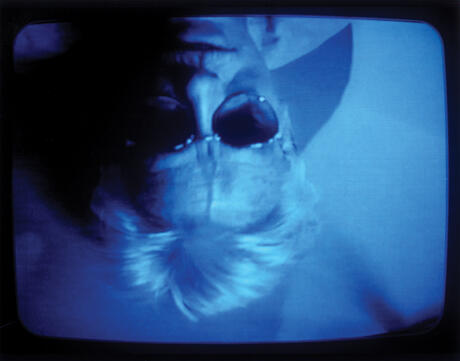
Richard Carlyon, longtime professor at Richmond Professional Institute and VCU, left a lasting legacy on campus. Part of a cadre of talented professors who helped build the nationally recognized arts program at VCU, Carlyon was a beloved teacher whose legendary, unorthodox lectures attracted standing-room only crowds. He influenced untold numbers of students to constantly challenge themselves and to explore the myriad possibilities of art.
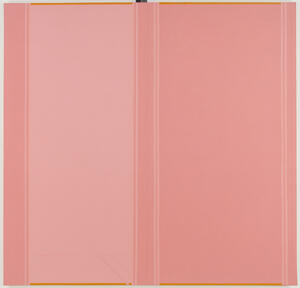
But Carlyon, who died in 2006, was also an accomplished and prolific artist himself. In maintaining a studio practice for more than 50 years, Carlyon produced an extensive collection of paintings, drawings, videos, collages and constructions. A selection of those works will be featured in a far-reaching exhibition, “Richard Carlyon: A Retrospective,” that opens on Sept. 11 at four Richmond galleries: the Anderson Gallery of the VCU School of the Arts, 1708 Gallery, the Reynolds Gallery and the Visual Arts Center of Richmond. Simultaneous opening receptions will be held from 6 to 9 p.m.
The exhibition will allow the Richmond community an opportunity to view the breadth of Carlyon’s work in a way it has not been presented before. The retrospective will highlight works from his entire career, including a number of pieces that have never been exhibited. In fact, the Anderson Gallery will reassemble his meticulously kept studio as part of its show. A series of free gallery talks will elucidate Carlyon’s vast portfolio and a dance performance will interpret it in movement.
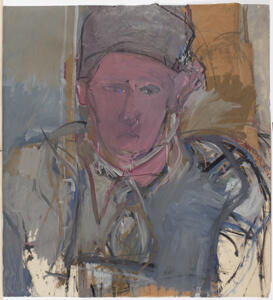
“It was always important to him to be a part of this community,” said Howard Risatti, professor emeritus of art history at VCU and the author of an in-depth essay in the exhibition’s catalog. “With this show, I think there’s a sense of the community doing something for him.”
The Anderson Gallery coordinated the retrospective, which is arranged thematically with individual curators at each gallery: Ashley Kistler at Anderson, Beverly Reynolds at Reynolds, Brad Birchett and Gregg Carbo at 1708 and Katherine Huntoon at Visual Arts. Reynolds, Birchett and Carbo each feel an especially personal attachment to the exhibition – each was a student of Carlyon’s. When Reynolds organized a 2005 exhibition of Carlyon’s work at the Reynolds Gallery, Birchett and Carbo helped Carlyon with the installation.
Organizers say that the retrospective will be eye opening even to those already familiar with Carlyon and his output. The range of styles and media, the scope of subject matter and the prevailing potency of the images promises to give the community a new appreciation for Carlyon the artist.
“People should be in awe of what he accomplished,” Reynolds said.
“There’s so much work,” Kistler said. “So much good work. It’s a wealth of riches.”
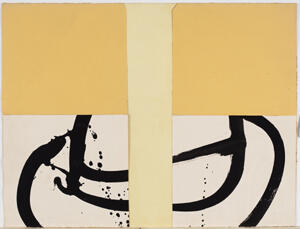
Carlyon received his bachelor’s degree in 1953 at RPI, which would become VCU, and returned for a semester in 1956 as an adjunct dance instructor. Two years later, after a productive stint in New York City, he enrolled at RPI as the school’s first MFA painting student – one whose resume already included several solo exhibitions and work in 35 private collections.
Carlyon joined the RPI faculty soon after receiving his MFA in 1963. He retired from teaching full-time in 1997 as a professor emeritus at VCU. Carlyon, who received the Distinguished Teaching of Art Award from the College Art Association in 1993, was awarded VCU’s Presidential Medallion, the university’s highest honor, in 2005.
The retrospective will detail Carlyon’s evolution from the expressionist and figurative work of his earlier years to the abstract pieces of his later years and will showcase his unusual versatility. Carlyon was a disciplined artist who approached each piece with intelligence and care, but he also utilized his considerable sense of humor, especially in his collages, and, inspired by the composer John Cage, employed the element of chance.
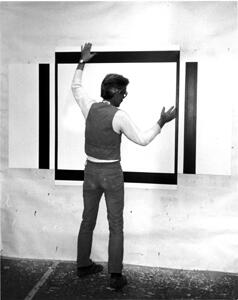
“He moved,” Birchett said. “A lot of artists in the '50s and '60s made work and kept with that same style of work, but Richard moved. He was always moving, which is what was so inspiring about him.”
Reynolds agreed, “It was part of what made his teaching so extraordinary. He was always going forward. He was never static in the way he looked at art. He was not an artist who stood still.”
Risatti said that willingness to experiment and change was based in part on Carlyon’s intense study of art history and his openness to new ideas in contemporary art.
“He knew what the possibilities of art were and he tried them out,” Risatti said.
The process was critical for Carlyon, according to Birchett, and the retrospective will give visitors a sense of Carlyon’s approach to his work. Of some of the collages in the 1708 Gallery exhibition, Birchett said “we’re not sure they were meant to be final.” The Reynolds exhibition includes a series of studies of Carlyon’s wife, Eleanor Rufty, traversing a number of years and styles. They are an intimate view of his changing viewpoint.
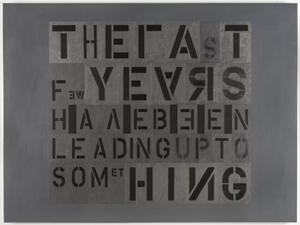
Reynolds said the works of Rufty were not meant for sale to galleries but Carlyon still preserved them with care. In fact, Carlyon’s studio was full of works in pristine condition that were never on the market. Reynolds said it was a sign of the importance that Carlyon placed on every single piece he did.
In his essay, Risatti laments that Carlyon was not exhibited more widely in his lifetime but notes that “commercial success was never a primary factor shaping his art or his studio practice … rather than give in to the demands of the market, he would let his work remain in the studio.”
“He was from this group of artists in the ‘50s and ‘60s who thought that art could change the world,” Risatti said. “It was never about making money for him. It was always about the work.”
VENUES
The Anderson Gallery exhibition, titled “Choice,” will run from Sept. 11 to Nov. 1. The gallery is located at 907 ½ W. Franklin St. It is open Tuesday to Friday, 10 a.m. to 5 p.m., and Saturday to Sunday, noon to 5 p.m.
The 1708 Gallery exhibition, titled “Interval,” will run from Sept. 11 to Oct. 17. The gallery is located at 319 W. Broad St. It is open Tuesday to Friday, 11 a.m. to 5 p.m., and Saturday, 1 p.m. to 5 p.m.
The Reynolds Gallery exhibition, which focuses on Carlyon’s works that feature his wife, Eleanor Rufty, as well as early and late paintings and drawings, will run from Sept. 11 to Oct. 25. The gallery is located at 1514 W. Main St. It is open Tuesday to Saturday, 10 a.m. to 5 p.m.
The Visual Arts Center exhibition, titled “Chance,” will run from Sept. 11 to Oct. 25. The gallery is located at 1812 W. Main St. It is open Monday to Friday, 9 a.m. to 7 p.m.; on Saturday, 10 a.m. to 4 p.m.; and Sunday, 1 p.m. to 4 p.m.
As part of the retrospective:
The VCU Department of Dance & Choreography will present, “Move: A Tribute to Richard Carlyon,” on Sept. 26 at 8 p.m. at the Grace Street Theater. The performance is directed by retired VCU dance instructor Chris Burnside, a friend of Carlyon’s, and features choreographer Laura Schandelmeier. Carlyon studied dance – in addition to painting – when he was an undergraduate at RPI and remained active in modern dance and choreography.
A 96-page catalog featuring essays by Howart Risatti and writer Wesley Gibson will be available at participating venues for $30. John Malinoski, associate professor of graphic design, designed the catalog.
Howard Risatti speaks on Sept. 17 at the Reynolds Gallery at 6 p.m.
The five exhibition curators participate in a panel discussion on Sept. 24 at the Anderson Gallery at 6 p.m.
A panel of artists who knew Carlyon appears at 1708 Gallery on Oct. 1 at 6 p.m.
Jason Carlyon, the artist’s son, and artist Ray Kass will speak on Oct. 8 at the Visual Arts Center.
Subscribe to VCU News
Subscribe to VCU News at newsletter.vcu.edu and receive a selection of stories, videos, photos, news clips and event listings in your inbox.





